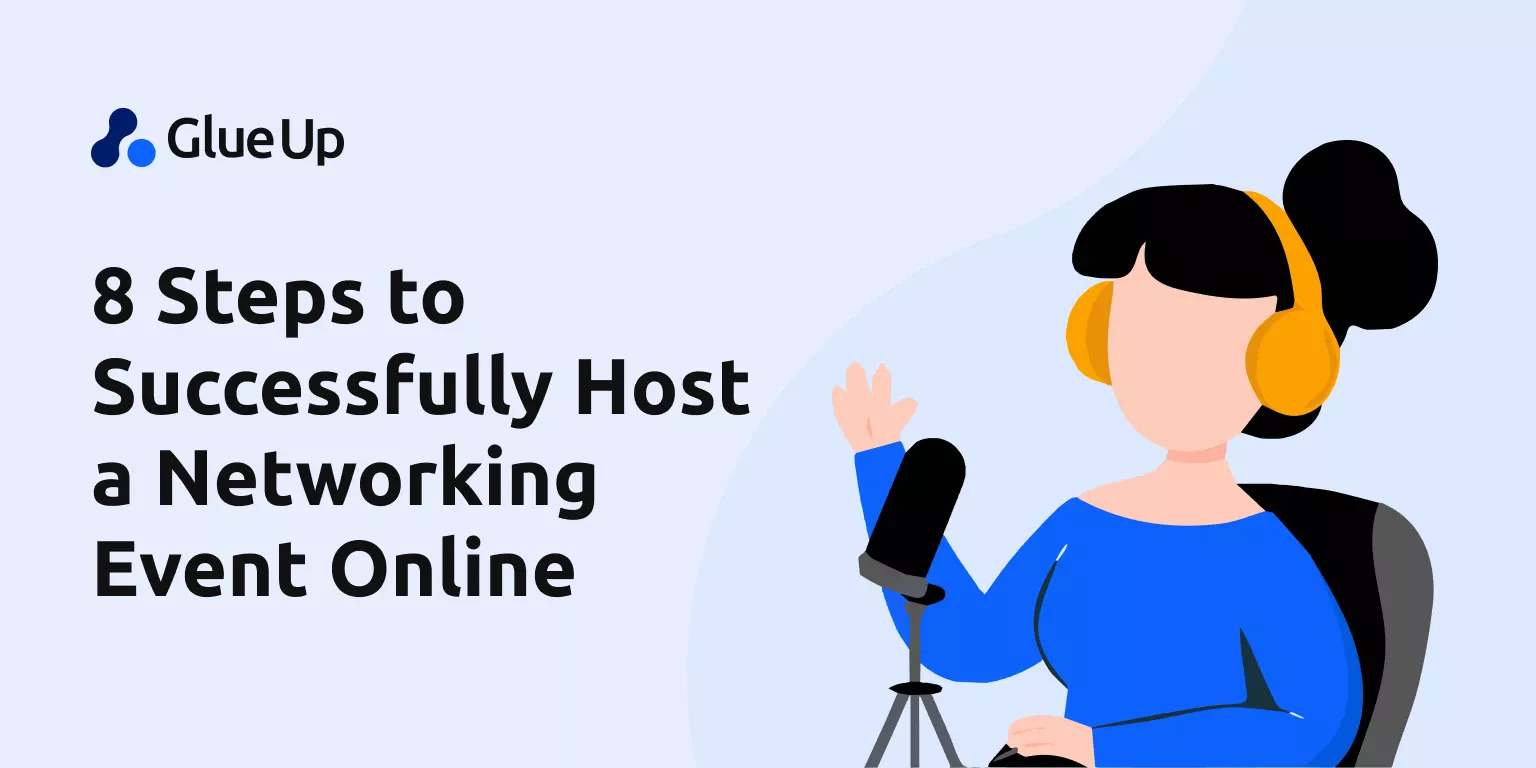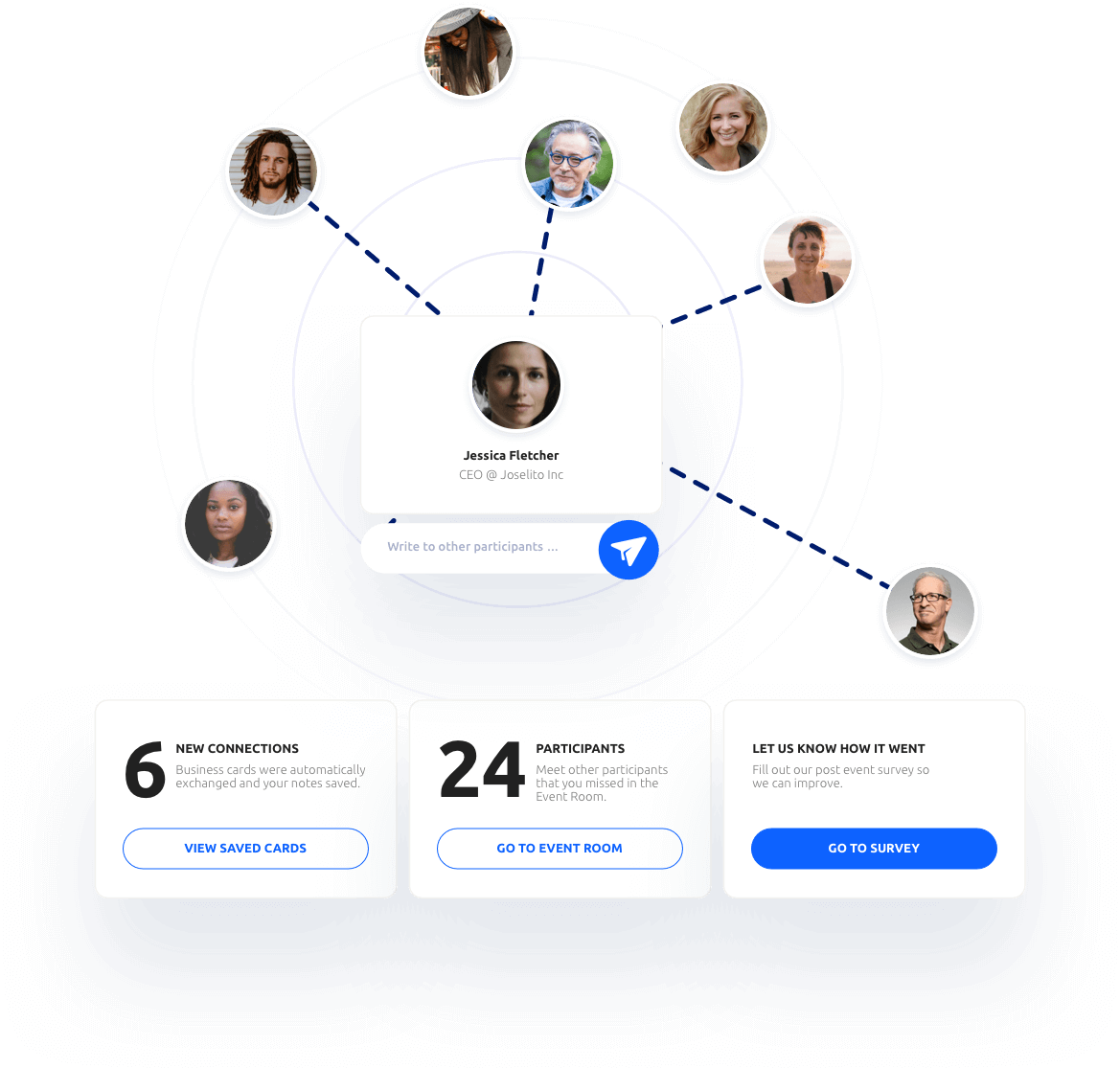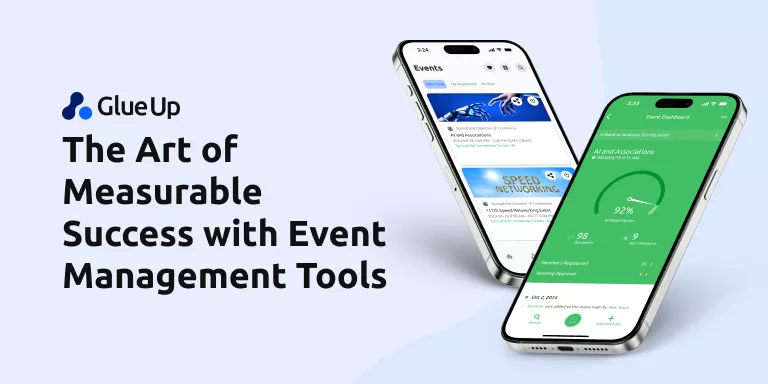
Hosting a virtual networking event keeps professionals connected amid a global pandemic. It’s ideal for anyone looking to make new connections with whom they can share best practices, innovative ideas, and helpful information.
If you’re interested to know how to host a networking event, you’ve come to the right place.
In this article, we will provide a quick list of 8 simple steps that you can follow for your networking event to be as effective as possible and ensure that attendees form meaningful business relationships online.
Quick Reads
- Know your purpose
- Determine your agenda
- Set the right event duration
- Assign an event host
- Choose a platform
- Promote or market your online event
- Introduce virtual event attendees
- Send a thank-you email
1. Know your purpose
As you begin to plan a professional networking event, you have to determine what you want to accomplish for it to be successful.
Therefore, you must ask the following questions:
- Do you want to build professional relationships?
- Would you want them to keep up-to-date with the latest trends?
- Is it an excellent opportunity for attendees to get new ideas?
- Do you intend to connect with key influencers and leaders in your field?
- Is the event for lead generation and prospects?
Once you know the answers to these questions, you can lay out a clear plan for creating event content and developing a good marketing strategy.
2. Determine your agenda
Preparing an agenda is essential in organizing an enjoyable and meaningful virtual networking event.
The participants should have a clear idea of what to expect from it. Therefore, you have to prepare a list of topics or activities you want to cover, who will initiate the meeting, the expected number of guests, and the duration.
Keeping track of the time as you hold an online networking event is a must. A script and a timer can both help in ensuring strong event consistency and keeping you on schedule.
3. Set the right event duration
A networking event should be a comfortable environment for professionals to truly connect as they mix and mingle.
In the virtual world, limiting the guests can ensure enough time for everyone to feel heard and seen during interactions.
We recommend that you set a 90-minute event. Even though it may seem long, it’s your role to make sure that you create a pleasant situation for meaningful interactions without the need to be rushed.
Another goal is to form a discussion that’s focused. To do this, check if there would be enough time for people to share personal stories, throw out questions, or bond as they likely would when meeting in person.
You’re free to invite close friends and business contacts. However, make sure that there’s a right mix of people who aren’t acquainted yet with each other.
Also, take advantage of the opportunity of tapping people from other parts of the world to join an online networking event.
4. Assign an event host

Event planning and event hosting are not the same. While a planner can also choose to be the host, there are times that the role will be assigned to someone else.
A great host is essential to meeting your goals, generating excellent attendee feedback, and having returning guests.
In a virtual networking for professionals, the host sets the tone and feel of the event. He can increase engagement and motivate guests with his voice, gestures, and facial expressions.
Some host characteristics you should look for are credible, relatable, and versatile. He must be comfortable with the platform and be prepared to handle technical issues.
One of the challenges of an online meeting is having to deal with technical difficulties. For this reason, the host should be willing to assist the attendees in setting up their cameras or connecting their audio.
If you plan to get an event host, scheduling training and a test run is always a great idea.
5. Choose a platform
You have to determine your event needs, technical skills, and preferences when picking the right platform for virtual networking.
If you’re hosting a speed networking event for professionals, our Speed Networking feature can help you manage it with ease.

It’s an innovative tool that lets attendees make connections quickly through its event community, event rooms, and one-on-one meetings.
Encouraging participants to get in touch is possible since you can hand out digital business cards in seconds.
Administrator privileges may be granted, which allows you to manage roles and permissions and adjust session length.
Once you’ve finalized the online event platform, you can send a calendar invitation to invitees. Inform them how to register and what they need to prepare before the event takes place.
6. Promote or market your online event
Social media is an easy way to promote your virtual networking event. You can ask employees, speakers, and other professional connections to do the promotion. The more people talk about an event, the greater the word-of-mouth marketing to expect.
They can opt to share a link to the event sign-up page. Moreover, you can also send them other supporting assets such as images, videos, and more, to have a variety in the event promotion.
On the other hand, keep in mind that personal outreach is also useful to guarantee attendance. Reach out to your contacts and send them an email to communicate your intentions and goals.
You can anticipate that one out of every ten personal messages will produce an attendee. Remember that there can be a last-minute rush of registrants and invitees since it’s an online event.
7. Introduce virtual event attendees
It's essential to send out an email introducing participants to each other a few days before the event.
Start your message with a warm welcome and be friendly as possible. It has to contain participants' names, brief information about each guest, a LinkedIn profile link, event start time, and end time.
This approach humanizes attendees and will help others, especially when they're keen to know what to expect.
8. Send a thank-you email

Once your event has been successfully held, do not neglect the importance of reconnecting in the future. Think of it as an icebreaker that can form meaningful relationships after.
Go to your event contact list and thank each participant via email for attending. We recommend that you include a post-event survey.
The collected data can provide valuable feedback to know what’s working and avoid common event failures for a more successful networking opportunity in the future.
Offering an eBook relevant to the topics discussed during networking sessions is also advised.
If some participants can be beneficial to your organization, scheduling a one-on-one session might be a good idea. It can be a great opportunity for you to include information about your future events that they can attend.
Conclusion
Hosting a networking event online is less expensive, saves time, and makes building connections easier.
Now that you know how to host one, keep in mind that the required work for it is significantly lighter than planning an in-person event.
With all the helpful steps we’ve provided, we hope you’re now ready to build more meaningful connections in different industries and offer the most rewarding experiences to business professionals.
If you plan to host a successful online networking event, consider booking a demo of our Speed Networking tools, and we’ll assist you at every step of the process.



